Card prints & Versions Guide
Learn to recognize cards that are very similar to each other, belonging to different editions.
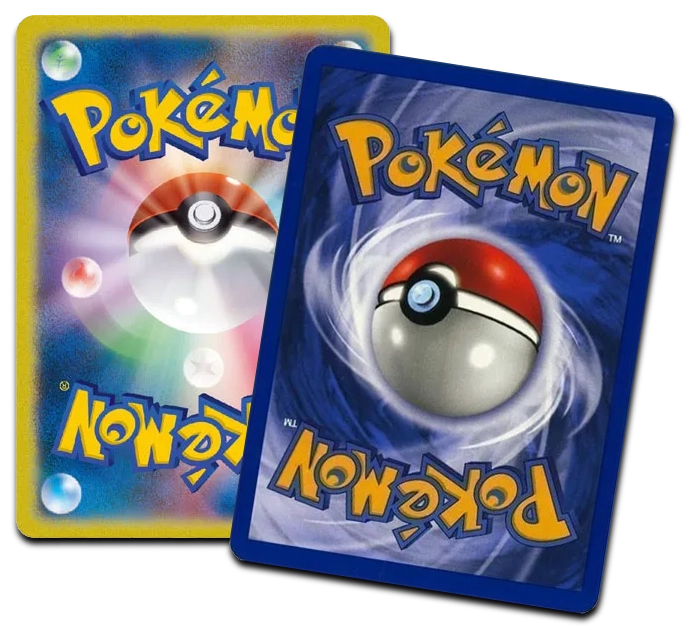
You need to pay special attention to first editions of cards to avoid confusion. Pokémon cards differ between those printed for the Eastern market and those for the global Western market. The differences go beyond just the language on the card.
In the '90s, it was easy to tell which set Japanese and English cards came from, as the set names were the same. However, in modern sets, this is no longer the case.
Japanese sets for the Pokémon TCG tend to be smaller subsets of the English versions. Usually, the Japanese set consists of two smaller sets compared to the English one, though there may be exceptions.
For example, the English set "Astral Radiance" is split into multiple sets in Japanese:
▸ Battle Region (s9a)
▸ Time Gazer (s10D)
▸ Space Juggler (s10P)






To recognize which set a card belongs to, just look at the top left corner. Western language sets usually have a specific symbol or letter code for each expansion, while Japanese sets are marked with a code of letters and numbers.






apanese and English cards have aesthetic differences related to the card edition, Reverse Holo treatment, and printing year. They don’t always keep the same features in their corresponding sets, with different design updates.
The back of Pokémon cards stays the same but can be easily distinguished:
► English cards (European languages, Chinese, and Korean) have always had the same back.
► Japanese cards have a completely different back (updated only once in 2001).



With the release of Pokémon "Black & White" in December 2010, some Japanese holographic Pokémon cards changed from yellow borders to new silver/gray borders, while the first silver-bordered cards in the West arrived only with "Scarlet & Violet" in December 2022.
As shown in the example, Japanese cards keep the same values, images, and layout, but they differ from the English edition in terms of Reverse Holo type, borders, expansion code, rarity, and serial number.

Pokémon cards printed in Asian languages have noticeable differences that go beyond just the text translation. Each language — Japanese, Korean, Traditional Chinese, Simplified Chinese, and Indonesian — can differ in the set code or release year, and sometimes also in the card texture or printing quality.
In contrast to a regular Holo card (where the effect is applied to the image), a Reverse Holo usually has the effect applied to the entire card, except for the image of the Pokémon.
There is usually a Reverse Holo version for each card in a set that does not have the illustration extending across the entire card (e.g., Ultra Rare, Secret Rare, Illustration Rare...).

On our platform, the diamond icon 💎 indicates that the card being sold is "REVERSE HOLO."
You should always consider the possibility that the card you have in front of you might have different versions. There are cards printed in promotional editions, theme decks, blister exclusives, which might come with a different Holo (usually Cosmos Holo for promo cards) or might not be holo at all (many cards are reprinted non-holo in pre-constructed and themed decks) compared to the main set printing.
Additionally, be sure to pay close attention to Reverse Holo cards from certain editions, which might not follow the standard rule where "Reverse Holo = hologram outside of the Pokémon's image."Check the following sections to identify each type of Holo and Reverse Holo.
For the disambiguation of similar prints, the platform will indicate (in parentheses next to the card name) the version that distinguishes it from other cards that might be confused with it (e.g., Cosmos Holo, Non-Holo, Cracked-Ice Holo…).
Please note that digital images may not accurately represent holographic effects or textures on physical cards. It is advised to refer to official descriptions and specifications for the actual appearance of the card. Our platform is committed to providing accurate representations of cards through official digital images or real-life photos, and clarifying similar cases with the specified version.
Over the years, there have been several experiments and changes in how holo cards are presented, depending on the expansion, Japanese or Western cards, and promotional editions.
We ask you to be careful with cards that might look very similar at first glance: there are reprints of cards that, even though they have the same serial number or design, may have a different "holo" effect.
It is necessary to rely on the version specified next to the name to avoid confusing the different holo prints of the same card. For example, some cards reprinted in theme decks have a different holography compared to the card from the main set.
As shown in the images below, you should be careful to understand the holo difference by tilting the card under good lighting and always checking for other prints with the same image, serial number, expansion code, and layout, but with a different holo effect (so the card should be listed in the correct listing).
There are rare cases where the type of Holofoil may vary depending on the language of the card.
The Hisuian Electrode V Box and Virizion V Box (2022) include two cards with different Holofoil treatments based on language:
English print ► Holo Cosmos
European prints (Italian, German, French) ► Starlight Holo
The type of Holo can vary depending on the rarity and edition. To make sure you don’t create the wrong listing, we always recommend checking the edition variants of each card using the "view all versions" button found on the listing page just below the card image.
Reverse holo cards are one of the most loved variants by Pokémon collectors, but their presence and design can often mislead those who aren’t experts. In many expansions, the reverse holo version doesn’t always follow the classic pattern (where the holographic effect is applied only to the background, leaving the central image intact), but instead has a design similar to the regular Holo version.
A notable example of this variation can be found in the EX Series (2005-2007), where reverse holo cards feature only a “logo stamp” on the image, instead of the traditional foil on the background. This graphic treatment makes the card easily confused with the regular version, leading to reverse holo cards being incorrectly listed.
Understanding these differences is crucial to avoid confusion and properly identify valuable or rare cards that might, at first glance, seem like regular cards. The following "Reverse" cards should always be listed for sale with the correct "💎" Reverse attribute (it must appear next to the listing).
Some cards may seem the same. If you know how to observe certain details closely, you'll be able to recognize and correctly distinguish the print edition. Recognizing the difference in the type of pattern allows you to better identify your cards and list them for sale correctly.
For example, the easiest way to tell the difference between all "Ancient Mew" cards is through a combination of both the copyright date and the holographic pattern (this card was printed with two different holographic patterns: "dots" and "cosmic" – known in English as "speckle" and "cosmos").
"Shadowless" refers to a series of graphic differences that only appeared in the English language printings of the Base Set.
The most notable "shadow" difference is in the border surrounding the Pokémon's image. In the Shadowless version, this border is flat and lacks a shadow or depth, making it appear as if the border is stuck to the background. Starting from the third English printing (Unlimited), this design was modified to create a more 3D and raised effect for the border, distinguishing the later prints from the earlier Shadowless ones.
On our platform, you will find two distinct editions of cards: Base Set and Base Set Shadowless.
►Base Set Shadowless: This includes the first two exclusive English printings, characterized by the absence of the shadow effect on the Pokémon's border. This version is known for the original design without the shadow.
►Base Set: This includes English Unlimited cards (without the "1st Edition" mark and with a shaded border), along with 1st Edition or Unlimited cards in other languages such as Italian, French, German, Spanish, and Dutch, all with the shaded border.This distinction will help you correctly identify the cards based on their edition.
The Shadowless Pokémon Trainer cards are nearly indistinguishable from the regular Base Set cards, except for the fact that they have the extra "99" printed in the copyright section at the bottom of the card.
The copyright date on the bottom of the Shadowless cards is: ©1995, 96, 97, 98, 99 Nintendo, Creatures, GAMEFREAK. ©1999 Wizards.
We want to remind you to be careful about possible stamps on the cards, as Pokémon promotional cards are different from regular ones due to the presence of unique stamps or symbols. These stamps identify the cards as part of special events, tournaments, advertising campaigns, or limited distributions. It's important to pay attention to these markings to avoid confusing promo cards with standard ones.
Each stamp represents a specific event or program, and recognizing them will help you identify the promotional cards in your collection.Below, you will find a list of the main types of promotional cards and their associated stamps.
One must pay special attention to the first editions of cards to avoid confusing them.








You need to pay particular attention to first edition cards to avoid confusing them.




There are certain expansions of reprinted cards with a small difference compared to the original print: a small "planeswalker" symbol in the bottom left corner. These cards belong to the sets The List, Mystery Booster, or Commander Secret Lair
Cards printed in recent years often have alternate artworks or layouts designed to match each new expansion. However, it’s easy to get confused when trying to recognize and classify the different types of alternate cards. In this guide, you will find the official classification of the various alternate cards.



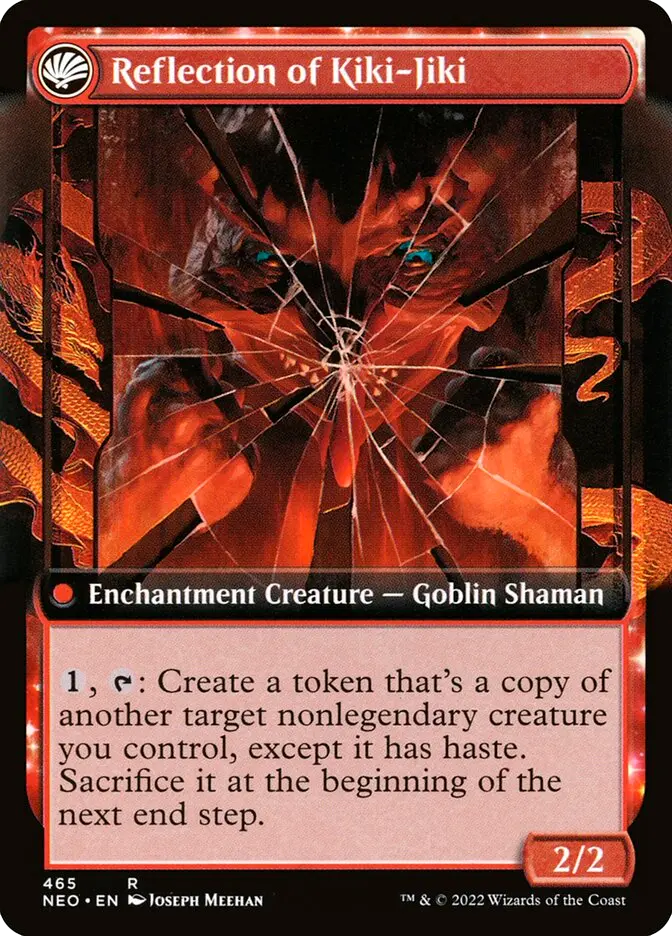

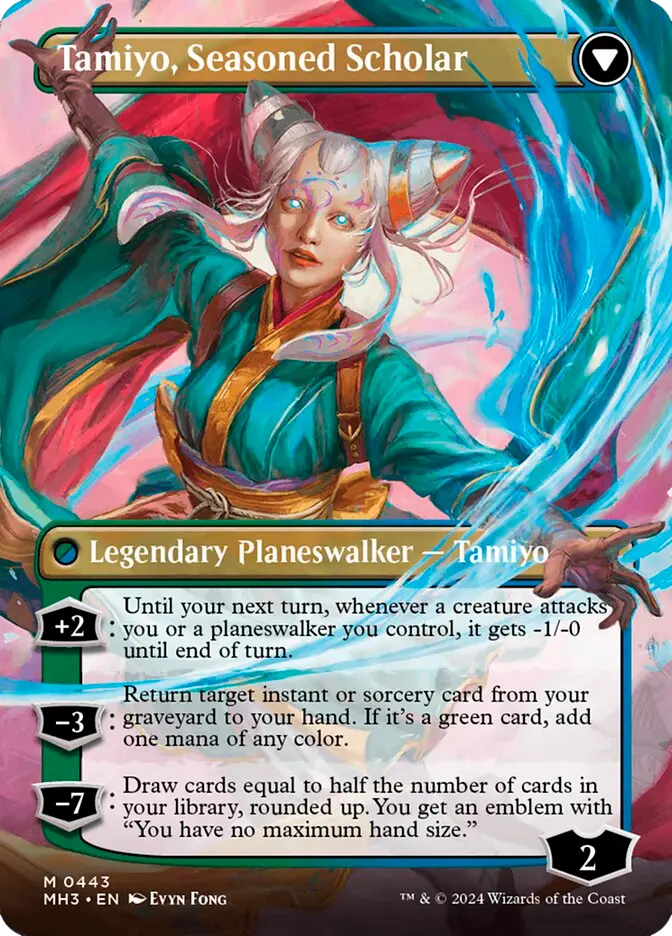

Magic: The Gathering has produced a wide range of promotional cards over the years, designed to reward players during special events or as part of exclusive products. In this guide, we will help you recognize the different versions of cards with overlays, so you don’t confuse them with each other or with their "regular" version.
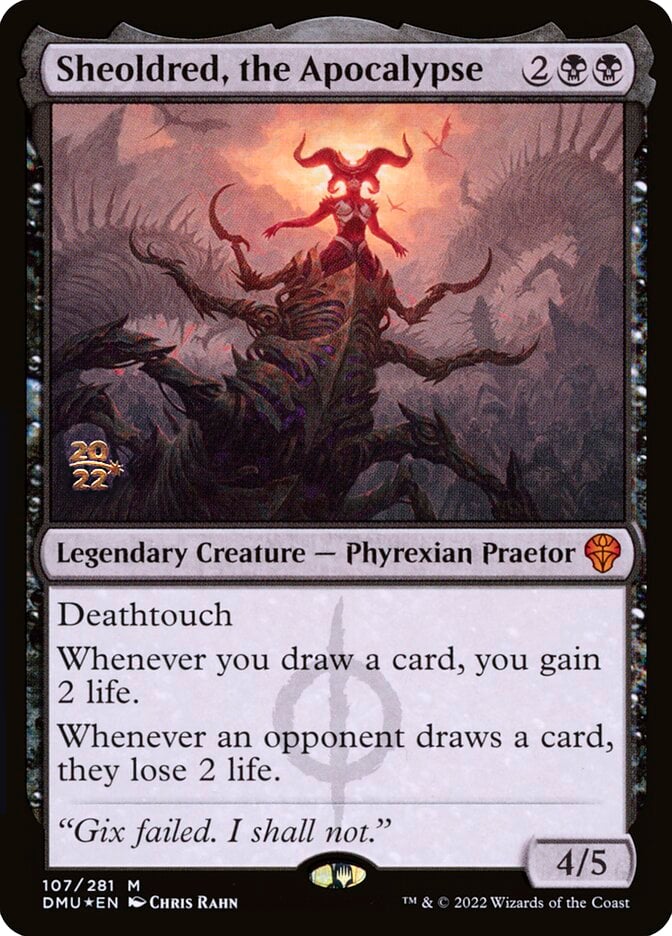


Over the history of MTG, the layout of cards has changed significantly. Recently, starting from 2020 expansions, new types of foils have been introduced, which are unique and quite different from each other, although they can still cause confusion when trying to distinguish them from the classic original foil.
On CardTrader, cards that feature a version different from the classic foil are clearly marked and easily recognizable thanks to the version listed in parentheses next to the name.

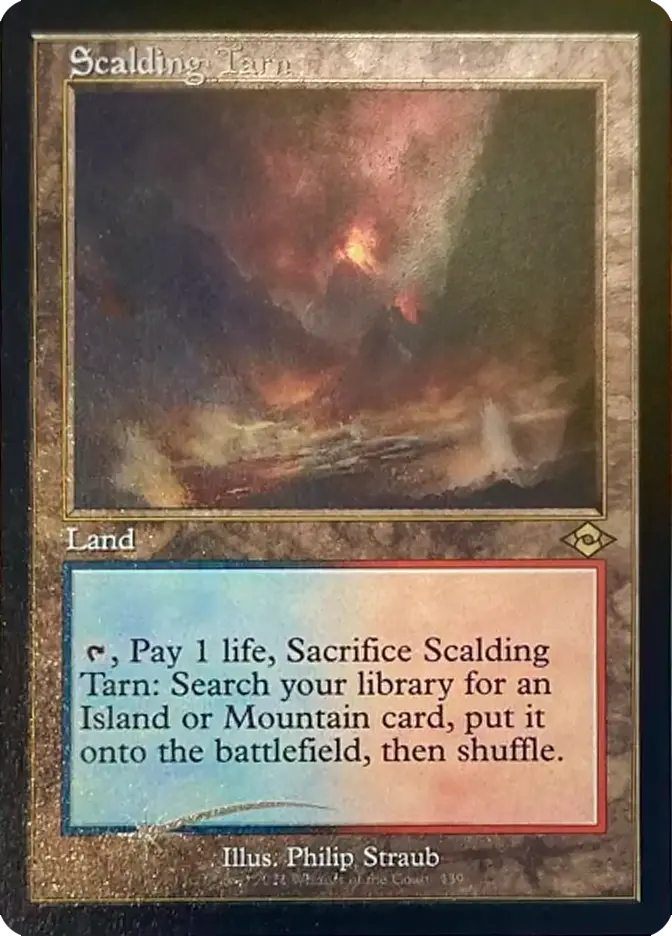










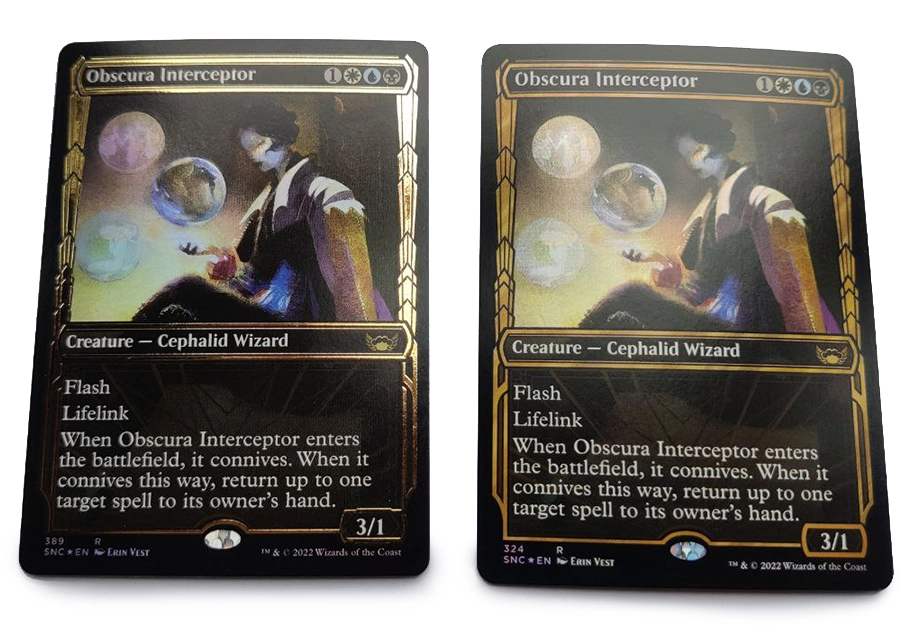


In this chapter, we will explain how to recognize a card with a "stamped" signature (not to be confused with "signed" cards, which are hand-signed by the artist using markers).




The SALVAT edition of Magic: The Gathering is a collection of cards produced in collaboration with the publishing house SALVAT, aimed at making the game more accessible to a wider audience. These editions often include iconic and popular cards. They may feature replicas of classic cards with updated or specific designs.
To distinguish identical cards within the same SALVAT edition, always check the serial number printed on the bottom border of the card.

The SALVAT edition features many identical cards, distributed across different "theme-decks."
The card's serial number changes depending on the theme-deck in which the card was included.






Magic: The Gathering cards printed in Japan are not limited to Japanese versions. English, Chinese, Korean, and other languages are printed in Japan but distributed worldwide. The same applies to cards printed in Belgium and the United States.
Before 2016, the printing technologies in Belgium, the United States, and Japan were very similar. Between 2016 and 2018, WotC announced that the printing process in Japan had changed. In particular, they highlighted that cards printed with the new technology have different fluorescence, surface texture, cut, and stiffness due to the paper used being different. Although more than five years have passed since the printing technology adjustment, many of the differences mentioned above are still unclear to many collectors, players, and sellers.
.webp)
The print quality can also vary depending on the product: many times, the cards found in "Fat Packs," "Prerelease Kits," or preconstructed decks have lower and different print quality compared to those found in regular booster packs of the main set. As you can see in the image, the difference is often easily noticeable by the color gradient, ink intensity, and print quality.
Cards printed in Japan cover many languages, so they are not only Japanese versions. Cards in English, Chinese, Korean, and other languages are also printed in Japan but distributed globally. The same applies to cards printed in Belgium and the United States.
The weight of MTG cards differs depending on whether they have the classic back or are double-faced. The same applies to token cards, Art Series, and promotional cards.
▸There are significant differences in the weight of cards printed in Belgium, the United States, and Japan. A non-foil card with the classic back printed in Belgium or the United States weighs about 1.78g, while the same card printed in Japan weighs about 1.63g.
▸The production standard differs because in Japan, cards are made with more expensive material to be recyclable (as required by law), which results in different color and thickness compared to those printed in the EU and the USA.[As shown in the image, the difference in thickness is clearly visible when comparing two stacks of cards printed in Belgium and Japan.]
▸The weight of the cards can also be affected by "production errors".
For example, there have been reports of errors in the production of double-faced cards from the Ixalan set (printed in different languages) because a different cardstock was used. The cards from this set are lighter, with foil versions weighing around 1.35g–1.40g. [This difference could make you think you're dealing with proxies, even though the cards are authentic!]
▸It is more complicated to determine the average weight of foil cards since the printing method has varied over the years. Over time, different types of foiling (etched, full art, galaxy, etc.) have been implemented, which may result in many print variations from country to country.


Although the fonts and sizes are the same, the text on cards printed in Japan has better-defined edges, with characters appearing thinner compared to cards printed in Belgium or the United States.
Magic: The Gathering cards are printed using a process called "offset printing." In offset printing, each of the four print colors (CMYK) is printed separately from the others. Additionally, there is a second layer of black specifically for the text and borders of the card.
The separate printing of each color can lead to errors for each color: the individual or multiple color channels may have incorrect ink consistency, may be obstructed by something (such as a stain), or the rubber rollers may not be properly cleaned between passes, resulting in various printing errors.


The differences in card production are not only due to the printing machines but also to the cutting machines. One of the most significant differences concerns the type of corner cut, which can help identify whether a card was printed in Belgium, the United States, or Japan.



It is possible that U.S. or Belgian cards have one or two corners perfectly rounded like the Japanese cards. However, the remaining corners will be sharper, and the overall print quality will still not match the Japanese counterpart. The corners of U.S. cards are slightly sharper than those printed in Belgium, but they share the same curvature.
To summarize, Japanese cards have more rounded corners, U.S. cards have less rounded corners, and Belgian cards fall in between.
Note: There are sets (such as Alpha and Beta) where the edges are universally cut as rounded, less rounded, or sharp, regardless of the country in which the cards were printed.
There are significant differences in the brightness of the surface of foil cards printed in Japan, Belgium, and the United States. The surface quality of cards printed in Belgium and Japan is generally superior to that of their counterparts printed in the United States.
Looking at Full-Art cards (Planeswalker Alternate-art, Borderless, or Extended Art) from Collector Boosters, the versions printed in Japan show a finer granularity in the foiling, a less intense reflection, and a smoother surface.
To protect the cards from everyday wear, a varnish is applied during printing, which is one of the main factors responsible for the shine. The coating can vary from country to country, leading to significant differences in tactile texture and brightness.In the image, we can observe the difference between an Oracle of Mul Daya printed in the United States and one printed in Japan, both from the Double Masters 2022 expansion. The Japanese version (on the left) has a smoother surface and more diffuse reflectivity, while the American version (on the right) has a darker finish, more contrasted colors, and a direct reflective effect.
The surface of cards printed in the United States is rougher, a texture that can be easily felt by touch. In contrast, the surface of cards printed in Japan is smoother and more even.
In some recent sets (such as Mystical Archives or the new basic lands from Innistrad: Midnight Hunt and Crimson Vow), there is a noticeable difference in the "thickness" of the layout details on the cards.
For example, the expansion symbol and the border lines on cards printed in Belgium and Japan are well-defined and raised compared to the rest of the card and the foiling. Cards printed in the United States, on the other hand, do not have this raised detail, maintaining a uniform foiling across the entire surface.
[Right: Japanese printing. Left: American printing.]
his difference in "raised details" is particularly evident in the Kaladesh Inventions, another example of variations between print shops.
The versions printed in the United States are entirely foil, with a visibly glossy and uniform surface. In contrast, those printed in Belgium have foiling limited to the border frame, which appears matte and raised.
Cards printed in Japan are similar to those printed in Europe, with the slight difference of having an even more matte and raised foiling, making them less reflective under light.
[Right: European matte foil print. Left: American glossy foil print.]

Although one might think there is a standard production process, Wizards of the Coast has used different types of paper over the years. The quality of the paper has improved over time and is now fairly consistent, with some exceptions. This aspect affects the weight and color of the cards. There are various sets that might seem unusual or even counterfeit simply because they were printed on a different type of paper.
The color of the card can vary in hue (from white to yellowish, from red to orange) or appear lighter or darker depending on the country of origin where it was printed. For example, in Japan, the whitening process of the paper uses different chemicals compared to those used for most European cards, as the fibers used are also different. The composition and structure of the paper significantly influence the final result.

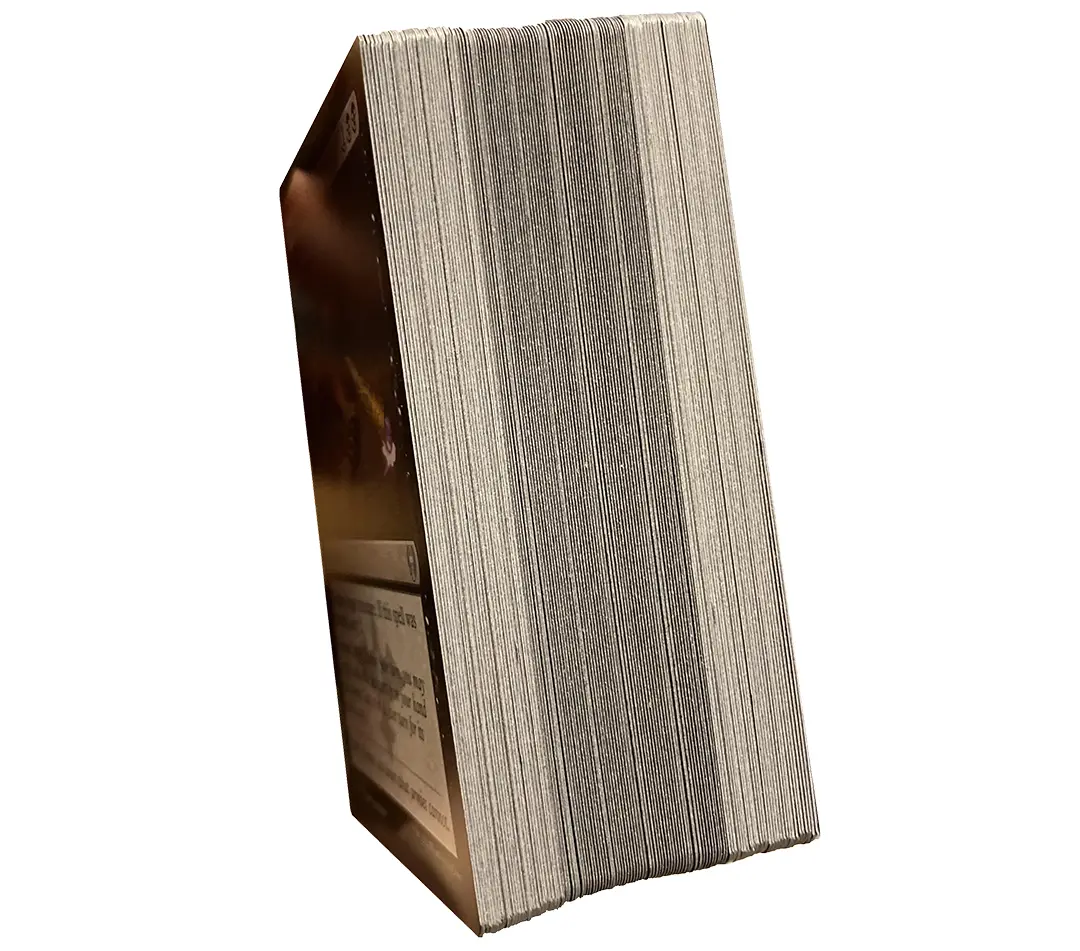
Magic: The Gathering cards are composed of multiple layers, with a colored plastic layer in the center that forms the core of the card. Most sets printed in the United States have a blue core, while sets printed in Japan have a purple core.
This characteristic makes it fairly easy to distinguish them, as the edge of cards printed in Japan appears darker. The foiling process introduces another variable: in general, the type of white used in the card determines how it reacts to UV light. Cards produced in Japan have a protective UV coating, so they do not react to UV light. As shown in the image below, exposing the cards to UV light reveals clear differences in colors.


These protective coatings are a standard practice in the playing card industry but were not adopted until Wizards of the Coast began producing cards specifically for the Japanese market, opening a printing facility in Japan.
Other printing facilities outside of Japan do not yet apply this coating, likely to reduce production costs. Additionally, cards printed in Japan use a different cardstock because they must be recyclable, as required by Japanese regulations.
In contrast, cards printed in Texas are not required to meet this standard, and so Wizards of the Coast does not use recyclable cardstock for them, presumably due to higher costs.
(*Japanese laws require that cards be recyclable. Traditional cards are not recyclable due to the plastic in the core and the plastic/metal present in foil cards, necessitating adjustments and changes to some materials.)
Japanese and European prints generally have a brighter appearance in images, while U.S. prints appear darker.
Western printed cards (TCG) are commonly distinguished as "American" and "European" cards due to differences that are well-known to most players and collectors. Here are the main printing differences:





American 1.53g

European 1.69g
Some people find that the cards printed in Europe are of higher quality than the American ones, especially the holo/foil cards, which have a better print quality as they are much brighter and more colorful. These are "differences" rather than "quality." Essentially, the rarity of European cards in America makes them more valuable because they are different and harder to find. The same applies to American cards, which are known to be visually different and more sought after by European players.
Thanks to our platform, it has become easier to obtain cards from sellers around the world, allowing the American and European markets to cross over with different prints. With this guide, we aim to reassure our users to recognize the authenticity of cards if they show print differences.

"Sky Striker Ace - Raye"
American (left) vs European (right)

"Timestar Magician"
American (left) vs European (right)
In the Yu-Gi-Oh! trading card game, each expansion can be released in two editions: the First Edition, initially printed and marked with "1st Edition," and the Second Printing (Unlimited Edition), distributed later without this label. To easily distinguish a First Edition from an Unlimited Edition, there are two key elements to check on the card:
► 1st Edition: Features the "1st Edition" label below the image or in the effect section and has a golden stamp in the bottom right corner.
► Unlimited Edition: These reprints do not have the "1st Edition" label, and the stamp in the bottom right corner is silver.
WARNING: Some expansions exist only in Unlimited Edition. Promotional sets also often lack a 1st Edition version, as they are printed in a single run without distinction between first and second printing.
Here is a list of some sets that were released directly in a single version, without the 1st Edition label:
▸Dark Beginning 1 & 2
▸Dark Revelation 1, 2, 3 & 4
▸Tournament Pack (TP1-TP8)
▸Champion Pack (CP01-CP08)
▸Turbo Pack (TU01-TU08)
▸Astral Pack (AP01-AP09)
▸OTS Tournament Pack (OTS1-OTSXX)
▸Speed Duel Starter Decks & Booster Sets
Yu-Gi-Oh! is a collectible card game that takes place in two distinct worlds: the Trading Card Game (TCG) and the Official Card Game (OCG). Cardtrader currently does not handle cards related to the Eastern market (OCG Duel Monster Card Game).
Therefore, we kindly ask you not to upload cards belonging to the OCG "Asian English" or "Asian" prints, as they belong to different expansions from the TCG, have different rarities and prints, and are not playable in TCG tournaments due to a.
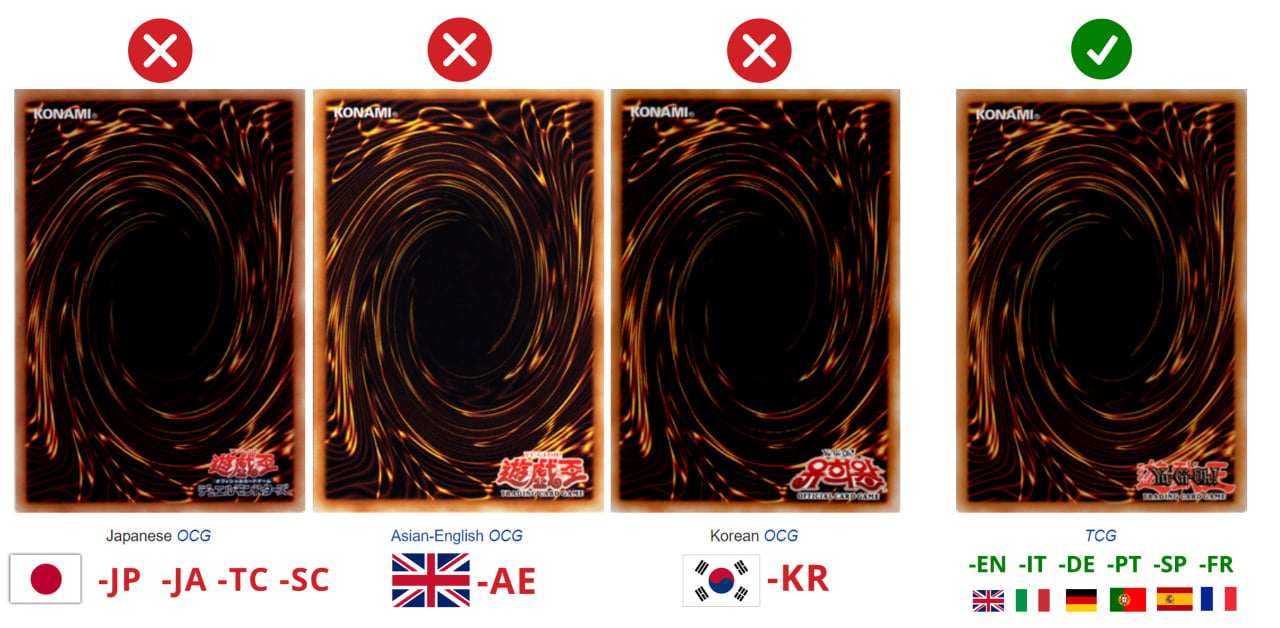
Cards printed in Asia may have slight differences if printed in Japan or other countries (e.g., Korea).
Japanese-Asian cards ("Japanese-Asian") are Japanese cards produced and intended for sale in Asian countries outside Japan.
They are commonly abbreviated as JA but listed as JP in the card set number. Cards printed in Japan (JP) have better print quality (paper and contrast) compared to cards printed in other countries (JA).
For higher rarities like "Secret Rare," the foil pattern is also different: JA would have a horizontal pattern, while JP would have a vertical pattern.
The rarity of Yu-Gi-Oh! cards is linked to the characteristic coloration of the card's name, differences in the foiling appearance, and textures. In this guide, we will explain how to avoid confusing lower rarity cards with higher rarity ones, and help you correctly list your items for sale.






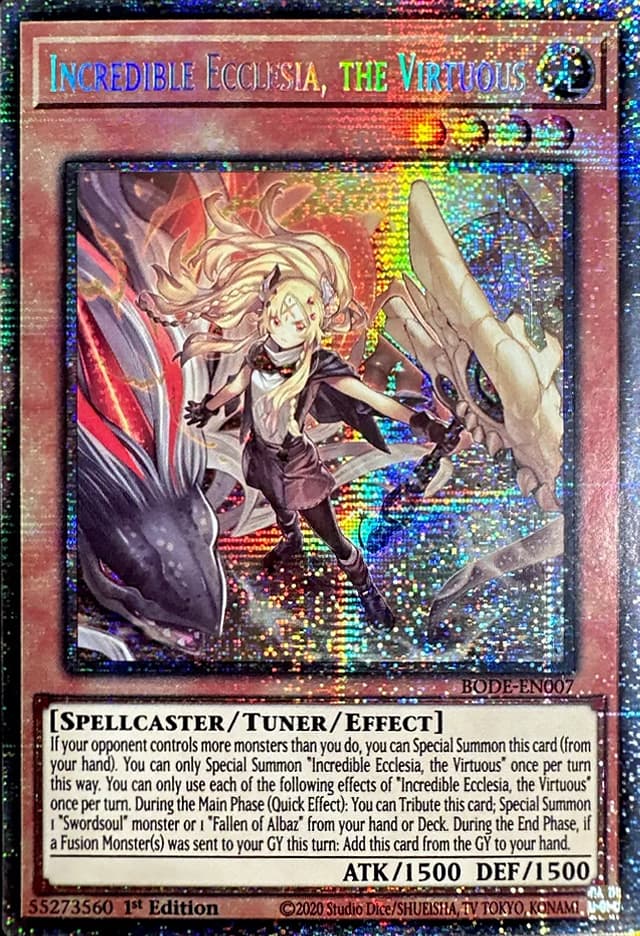









Parallel Rare is a general term used to refer to cards where the entire surface of the card is holographic. They are identical to their non-parallel counterparts but feature a coating on the entire surface of the card.
This coating can have different patterns depending on the type of rarity. Otherwise, they commonly follow the same style as other rares of the same type. Most Parallel Rare cards can be found in sets such as Duel Terminal, Battle Pack 2: War of the Giants, and Star Pack.
Parallel Common, Rare, Super Rare, Ultra Rare, and Secret Rare cards typically have a dotted, shatterfoil, mosaic, or other unique design applied to the entire card in the form of a foil or non-foil film applied to the top layer of the card.






Rarity Collection of Yu-Gi-Oh! is famous for presenting the same pool of cards in seven different rarities.Here are some useful tips to help you recognize the different rarities in this set:
Card Name ► Pay attention to the color and effect of the text, which is often the clearest indicator of rarity.
Light ► Examine the cards under direct light to highlight the different holographic effects.
Comparison ► Compare your cards with a guide or other cards of the same rarity.








In the Rarity Collection expansions RA01 and RA02, the Platinum Secret Rare rarity stands out due to the use of holographic effects, with a significant difference:
►Platinum Secret Rare from RA01: The holographic effect, similar to that of the classic Secret Rare, is limited to the image of the card and the outline of the effect's text box.
►Platinum Secret Rare from RA02 and RA03: The same holographic effect is extended over the entire surface of the card, creating a brighter and more uniform appearance. This change makes the Platinum Secret cards from RA02 and RA03 particularly eye-catching and easy to distinguish from the RA01 versions.
It is important to be cautious not to confuse the Secret Rare with other rarities. Carefully distinguish the type of holographic treatment applied to each rarity and expansion.

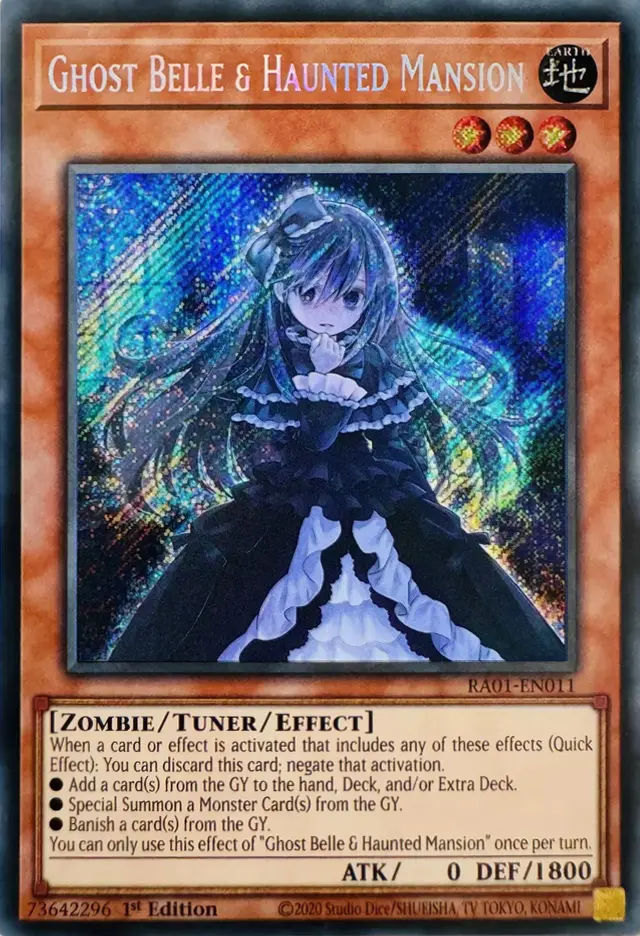


Foil cards in Flesh & Blood are primarily recognized for the glossy effect on the surface, which varies depending on the area of the card that is illuminated. This effect can be more or less noticeable depending on the light and angle from which the card is viewed.




When examining Regular (non-foil) and Cold Foil cards, it's important to distinguish between them:
Non-foil cards:
► Regular cards have no glossy effect. However, some non-foil versions may have particularly sharp details or slightly different colors, which can be misleading. Always check the card type and the set it belongs to.
Cold Foil:
► Cold Foil cards are characterized by a more subtle gloss, visible only in certain areas like weapons, armor, or metallic details. This effect is more delicate than Rainbow Foil and may appear less noticeable, especially in low-light environments. Be careful not to confuse Cold Foil with non-foil or poorly printed cards: Cold Foil is rarer and is typically associated with equipment or important cards.
Rainbow Foil cards can also be tricky to distinguish, especially in specific cases:
► Less noticeable foil effect: Some Rainbow Foil cards, especially those with dominant colors like red, may have a less bright foil effect. This happens because dark or intense tones, such as red, tend to reduce reflectivity, making the card appear non-foil at first glance.
► Lighting: Insufficient lighting or the wrong angle can make the Rainbow Foil effect almost invisible. To check, tilt the card under strong and uniform light to reveal the glossy effect. In these cases, it’s easy to confuse a Rainbow Foil card with a non-foil one, so always examine the card under good lighting to avoid mistakes!
In Flesh & Blood, there are two main editions for each set: 1st Edition and Unlimited. The distinction between these two editions is crucial, especially for collectors and those looking to understand the value and rarity of the cards.
1st Edition cards are generally rarer and more valuable, while Unlimited cards are intended for a wider audience, still maintaining high quality and appeal for players.
Here’s how to distinguish the First Edition and Unlimited editions for the different Flesh & Blood sets:


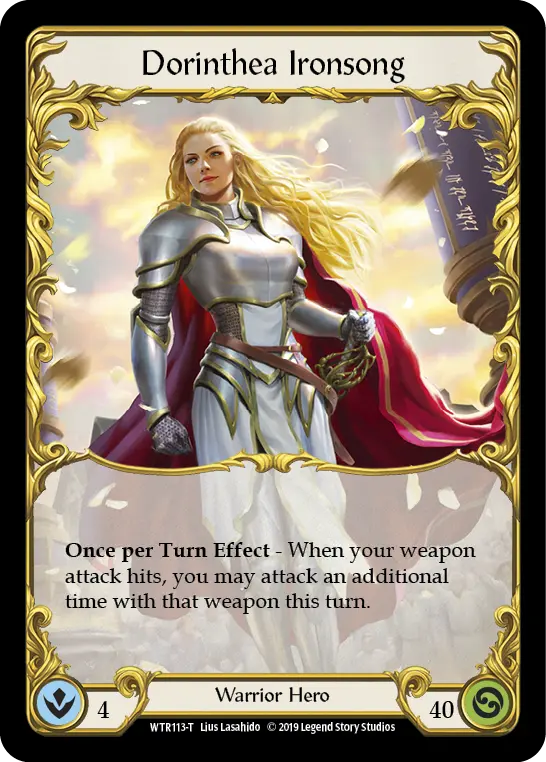







In the One Piece trading card game, some cards are classified as "Errata Cards", meaning they have received text corrections.
Errata Cards are issued to fix misprints or translation errors, clarify wording for better understanding or adjust card effects for game balance.
The text on the reprinted version is considered the correct one and must be used in all official tournaments, taking precedence over the original card text.
In One Piece TCG, cards with text errors or necessary updates are corrected and reprinted in Revision Packs, special packs containing updated versions of the cards. However, unlike the original cards from the expansions, the reprints in Revision Packs are not holo, meaning they lack the holographic effects present in the original versions.
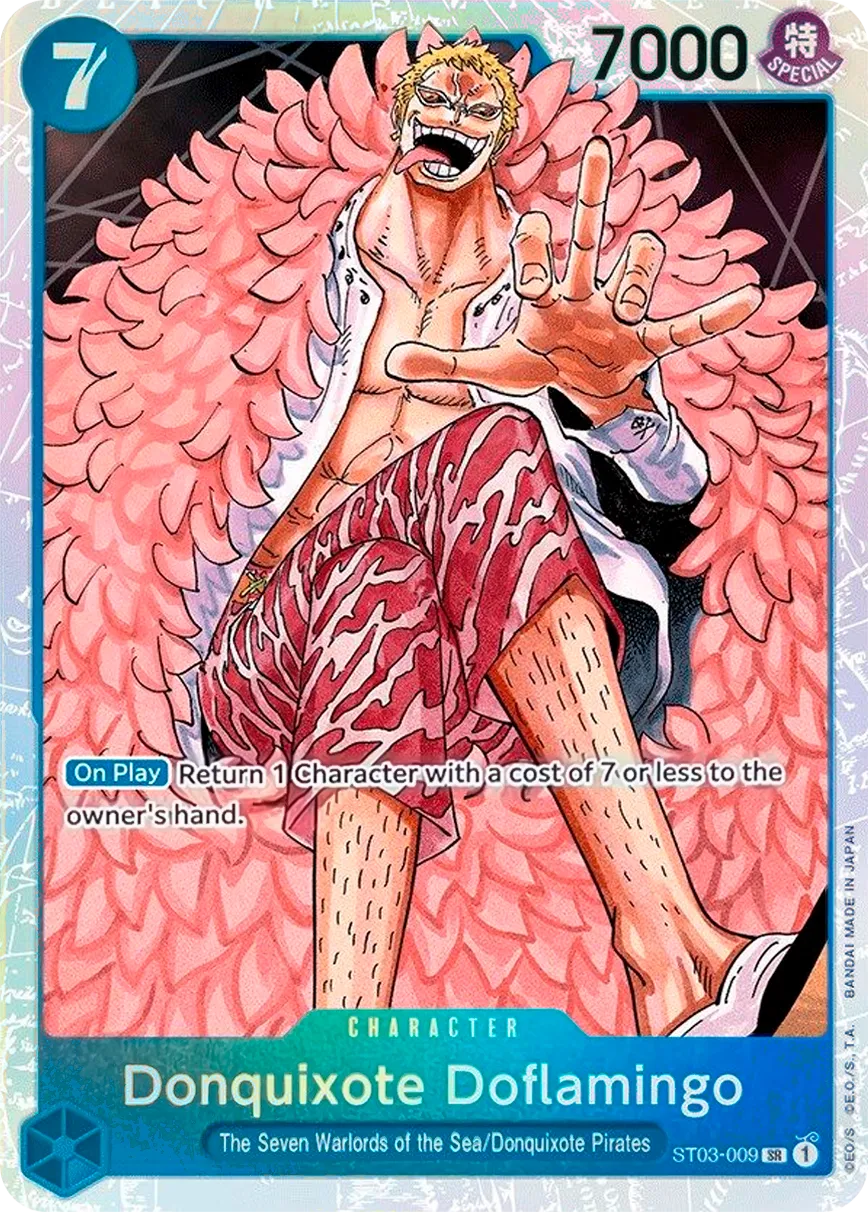

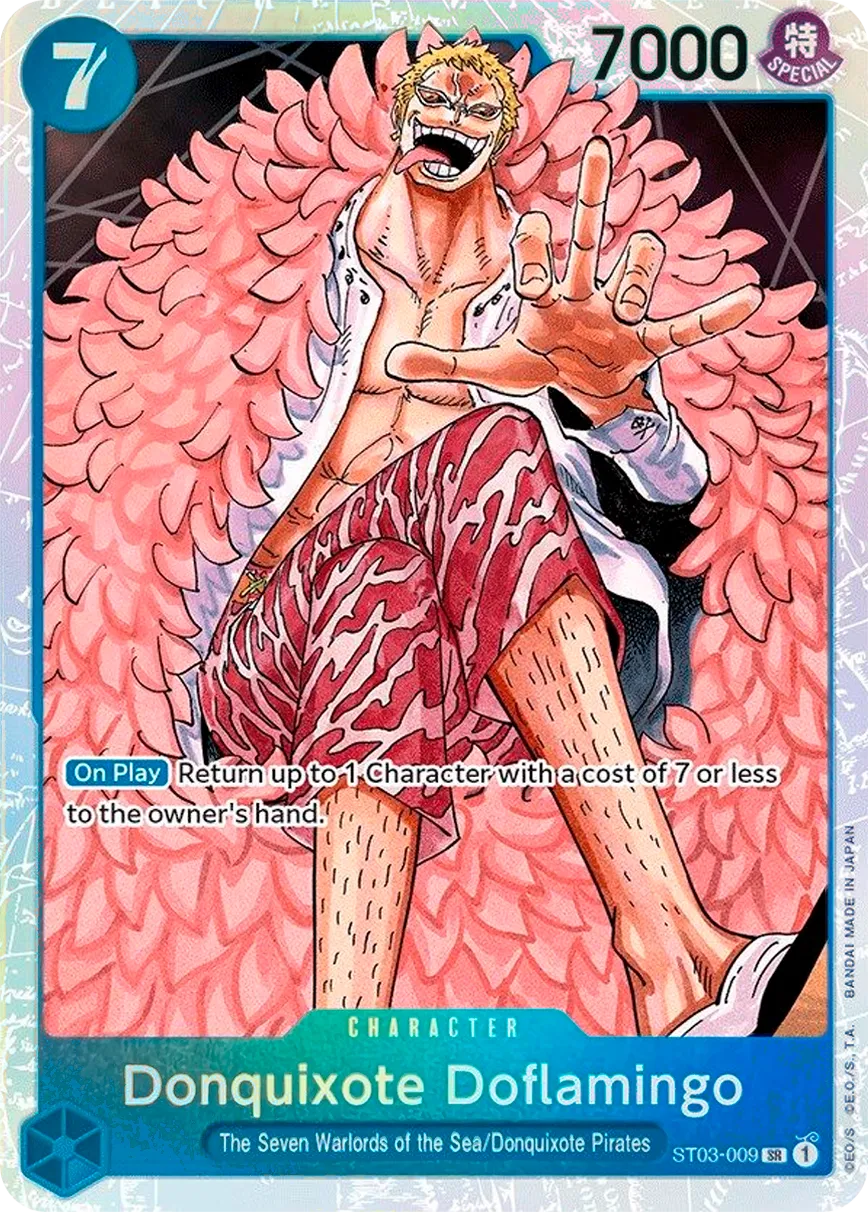

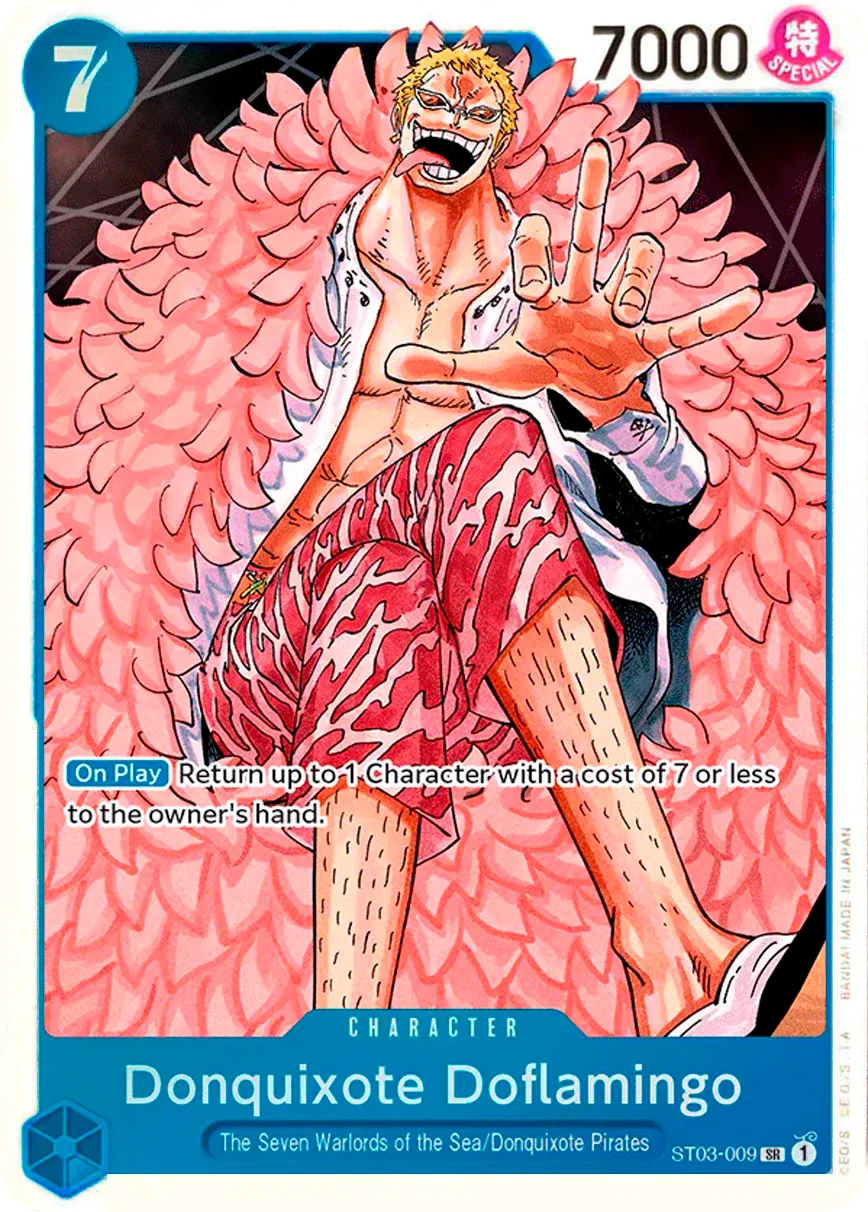

Cards from the "[OP-01] Romance Dawn" set have text differences due to misprints in card effects and rule descriptions, resulting in three different print versions:
►The very first print run is known as the "Alpha" Print, found in OP-01 booster boxes with a blue bottom.
►A second print run, called the "Beta" Print, was quickly produced to correct the text. However, this version still contained mistranslations of the card effects.
►Finally, a third and final wave was printed, known as the "Post Errata" Print, where all text errors were fully corrected.
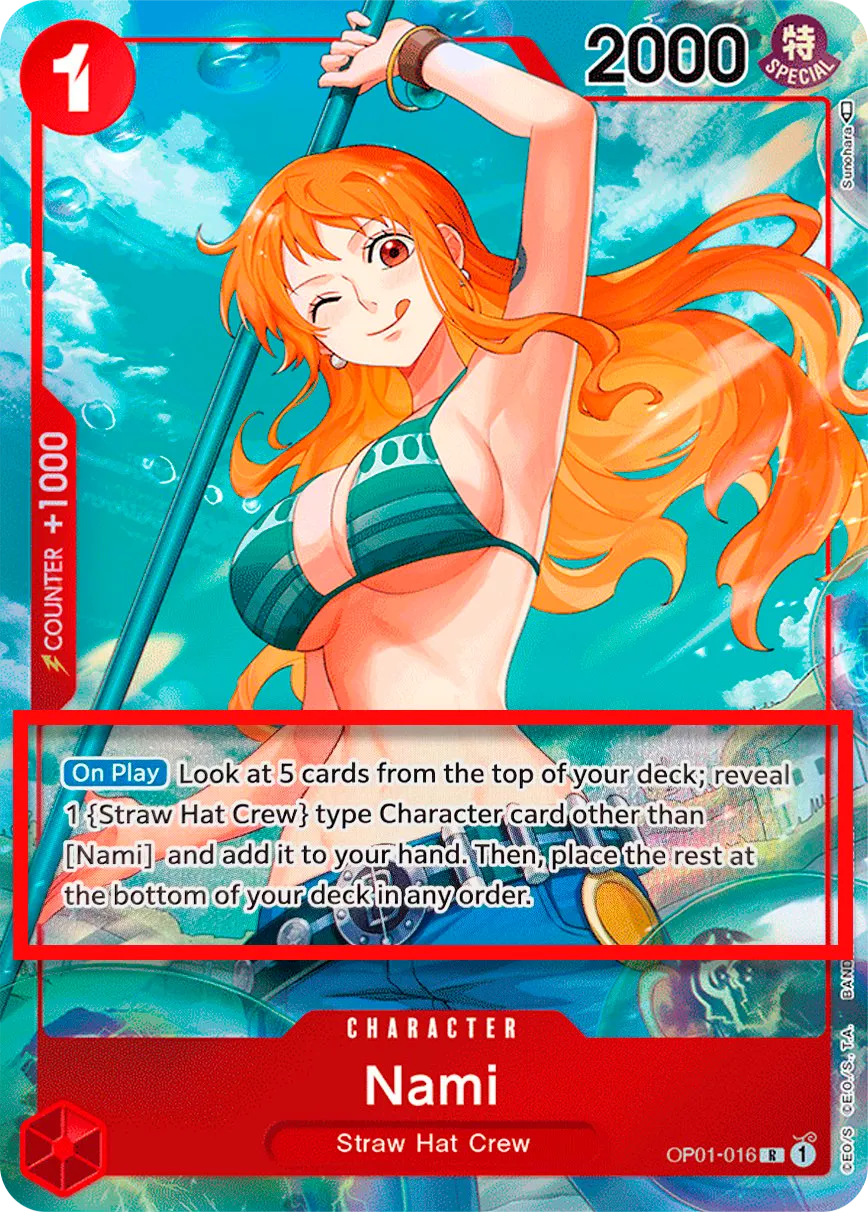
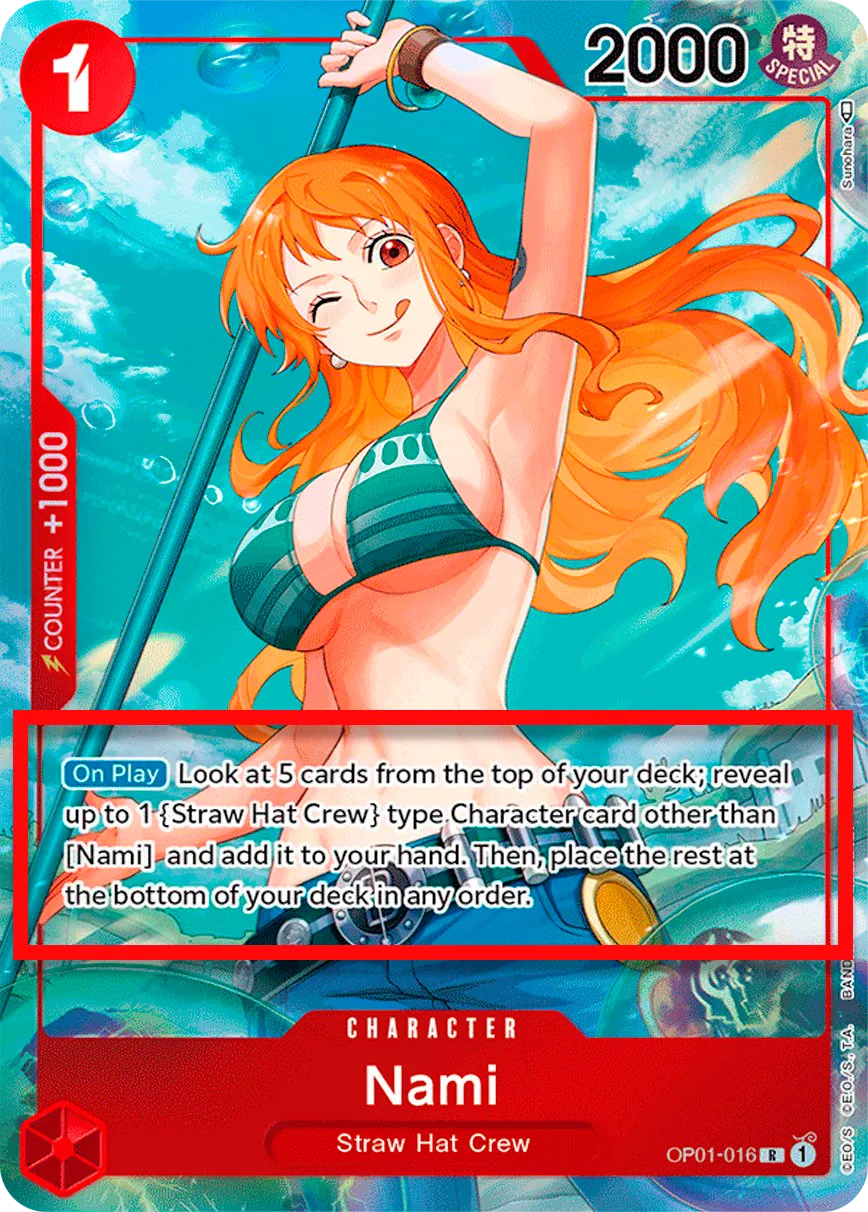
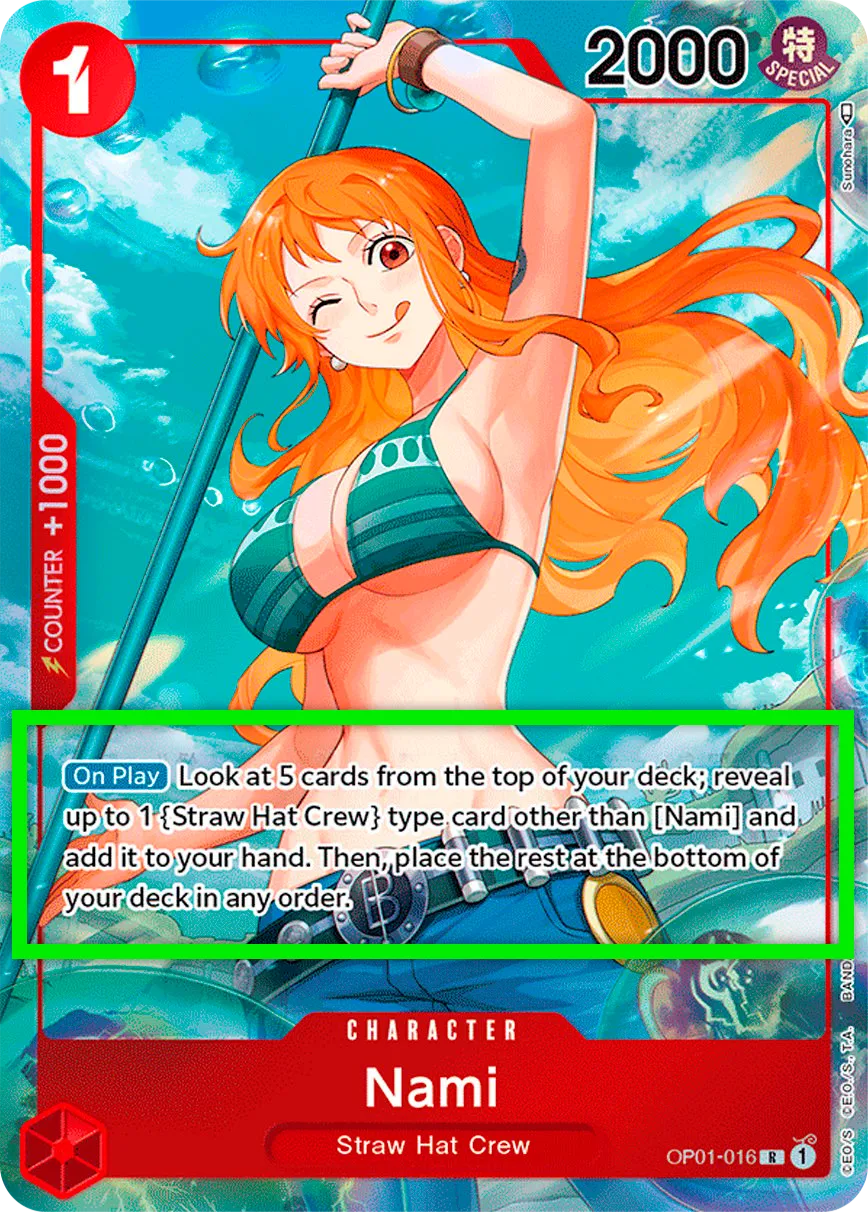
The "PRB1 - The Best" edition includes reprints of many popular cards from past sets, from OP01 to OP06, as well as promotional cards. Not all cards in this set can be easily distinguished from their original set prints, but PRB1 cards can be identified by the following features:
► Absence of the "✎" symbol next to the artist's name
► Textured Foil printing
► Jolly Roger Foil printing
► Full-Art printing
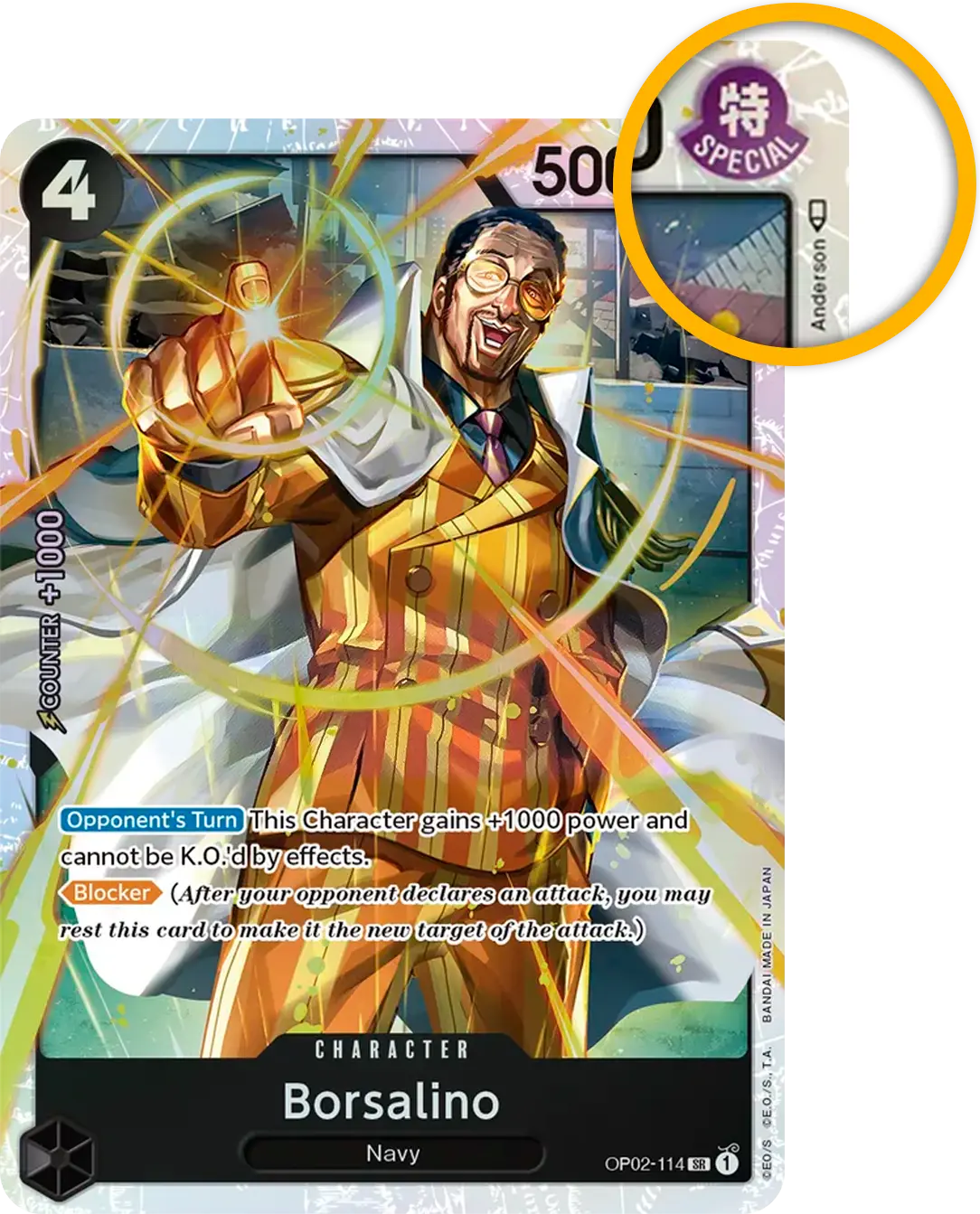
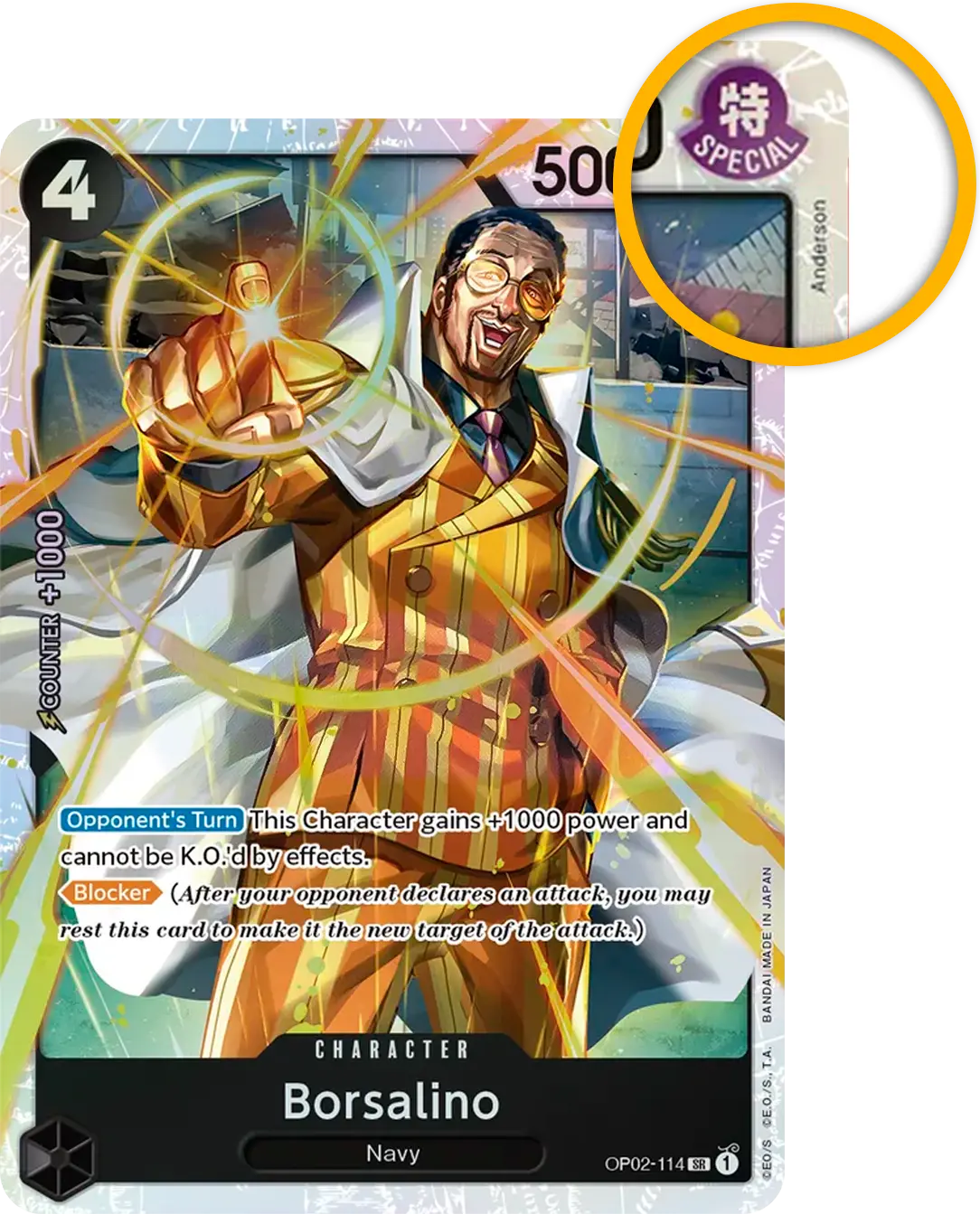
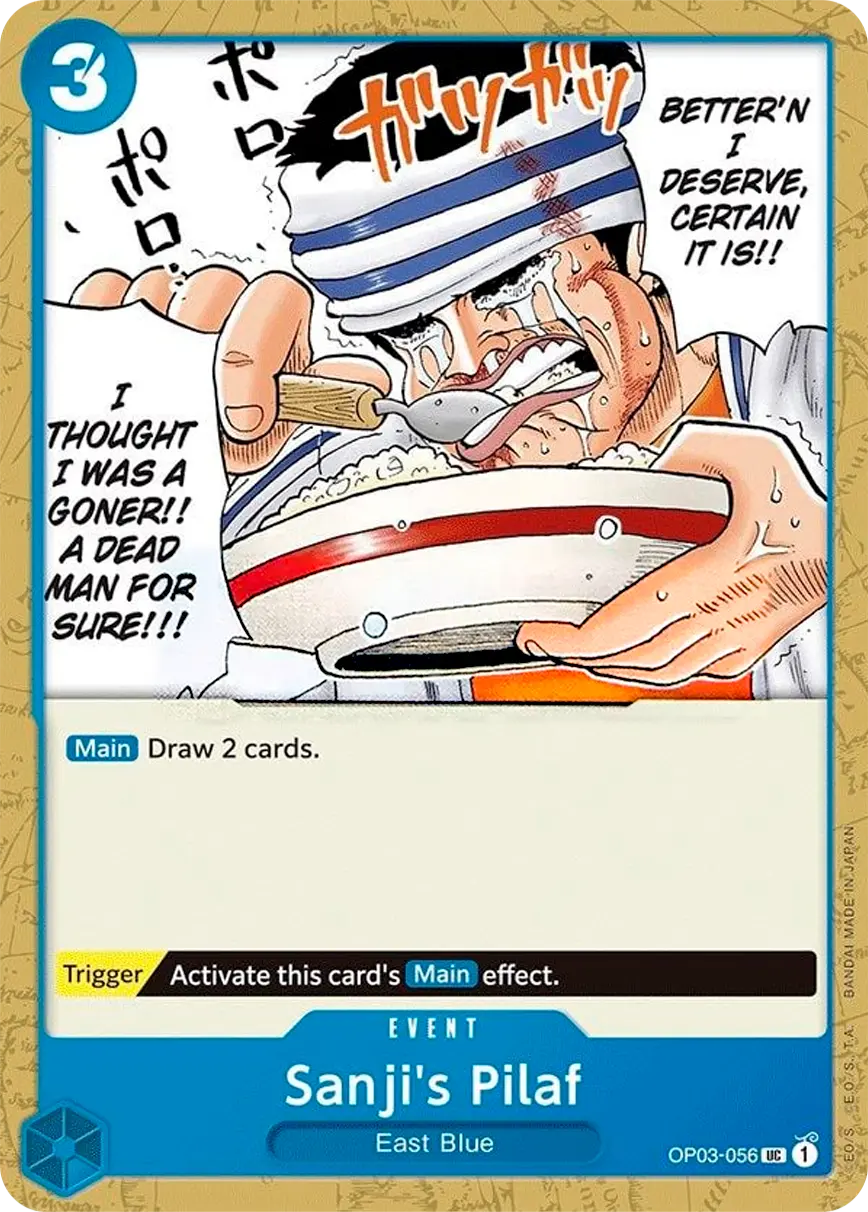
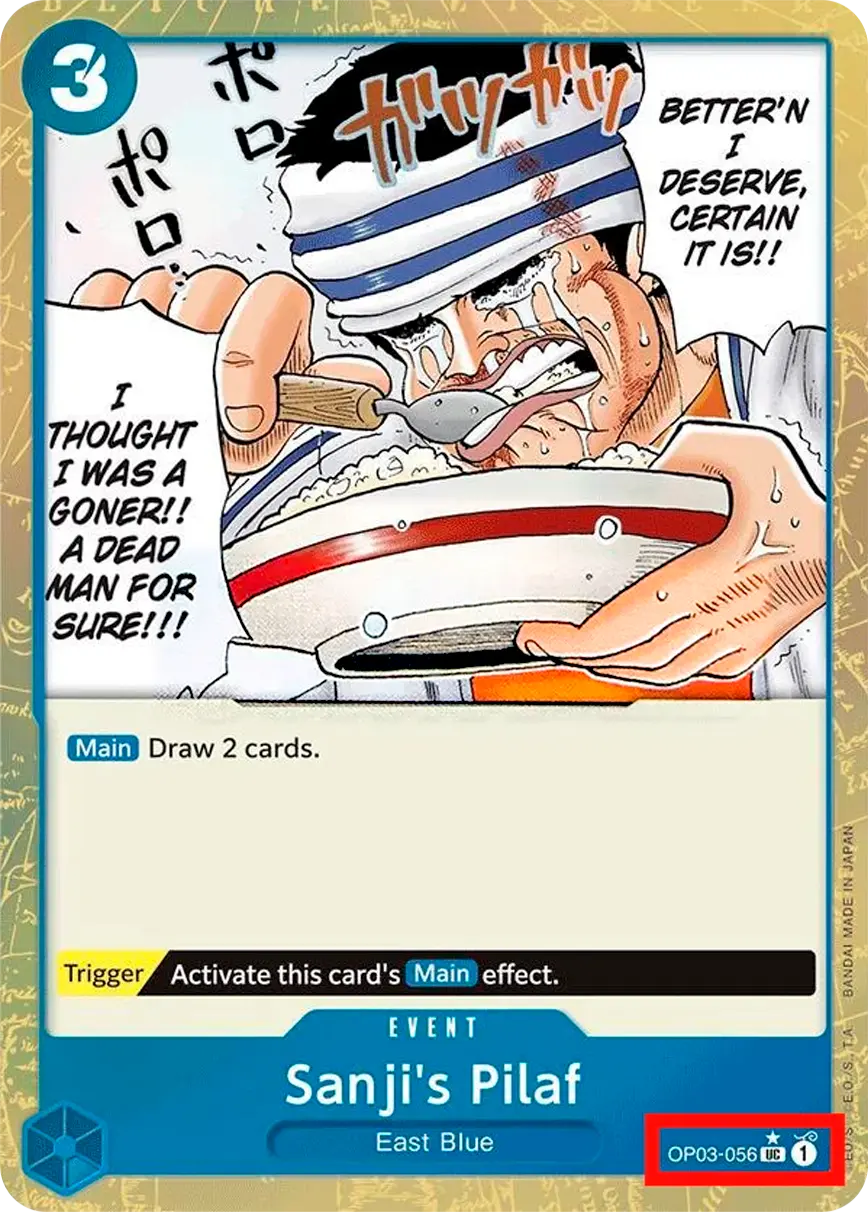
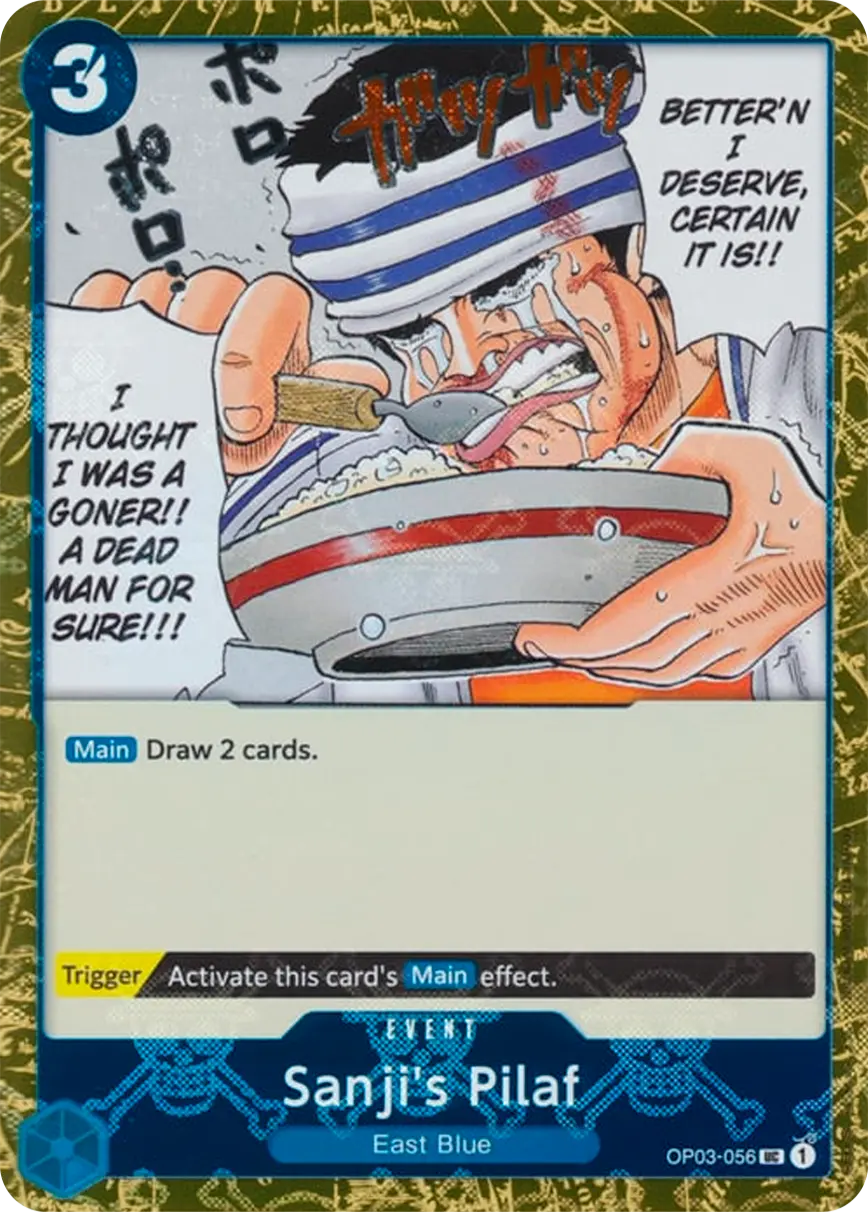
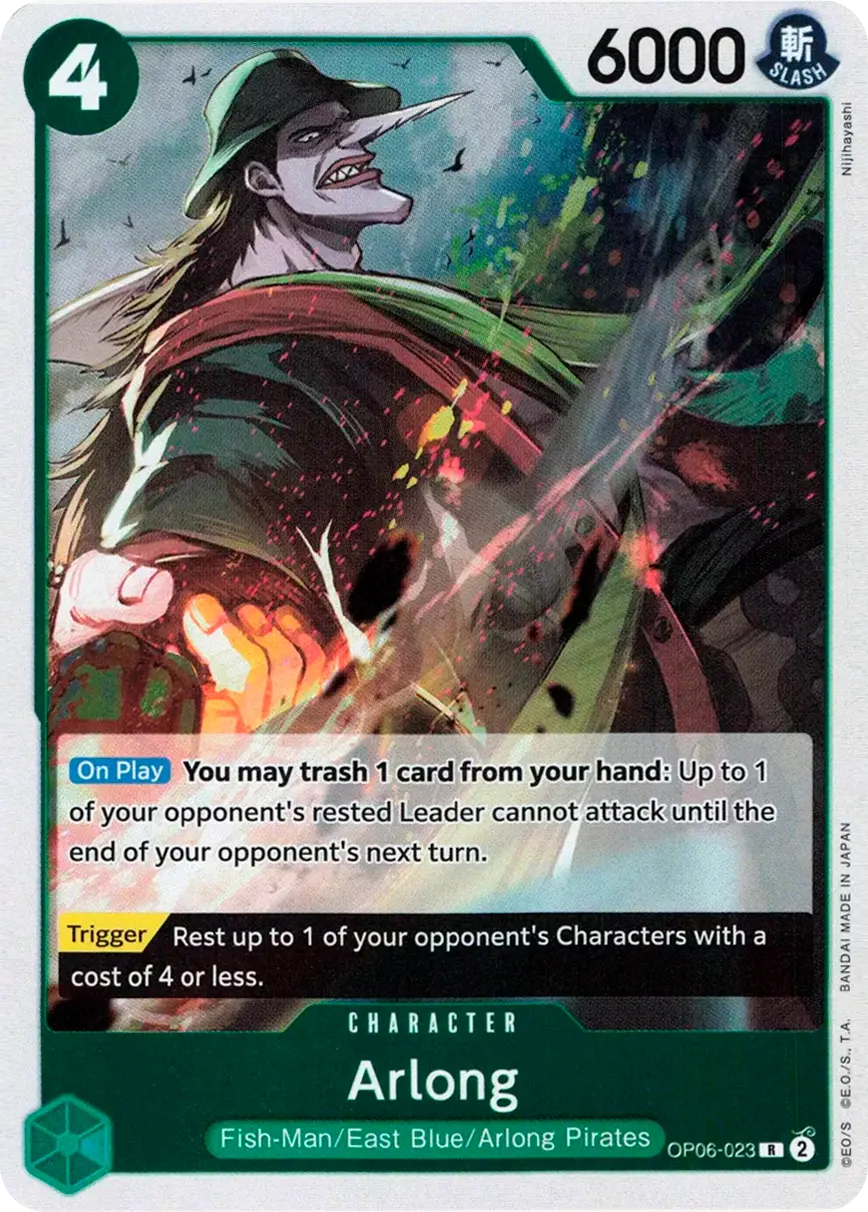
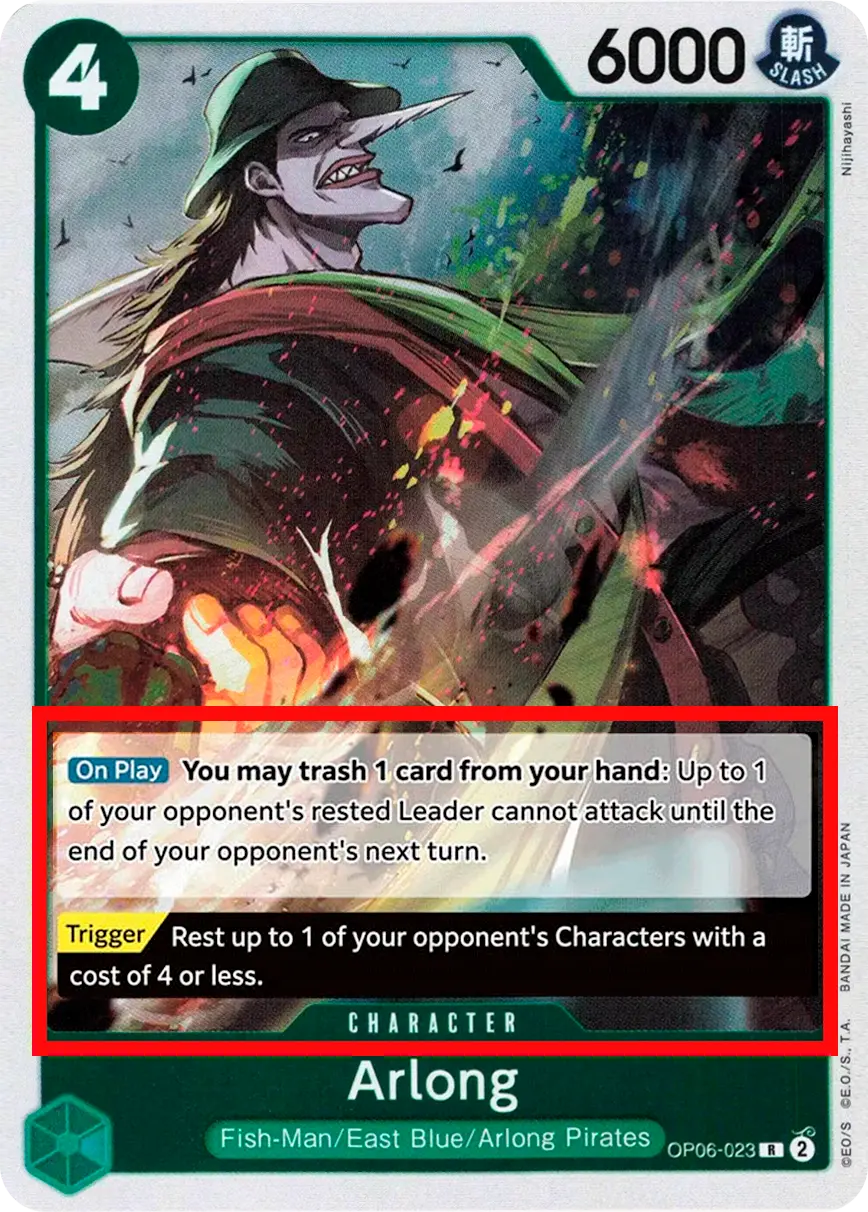
Digimon
Guide available soon

Lorcana
Guide available soon
